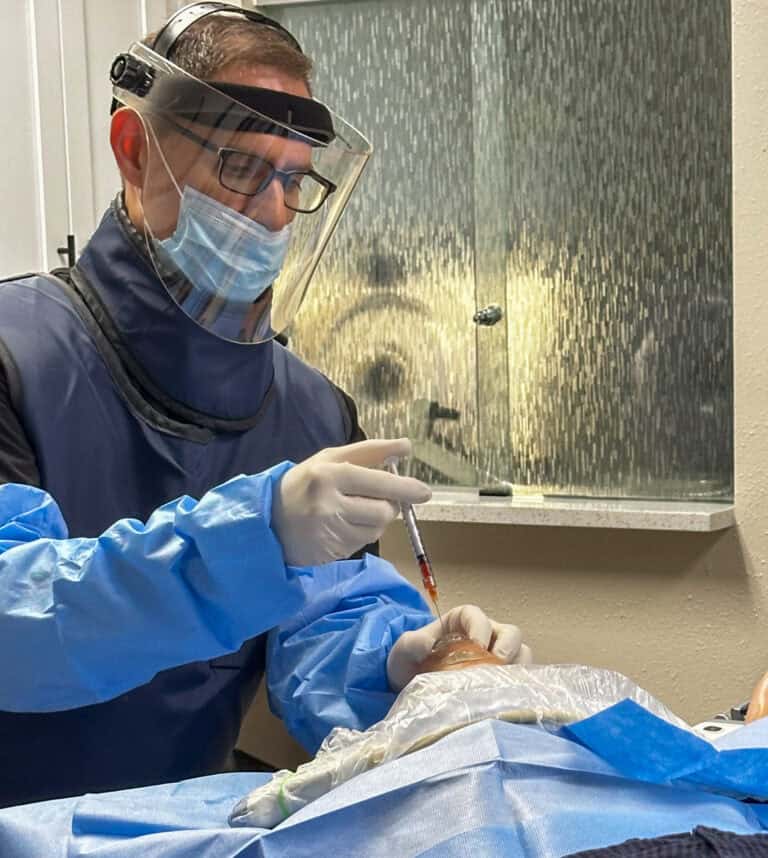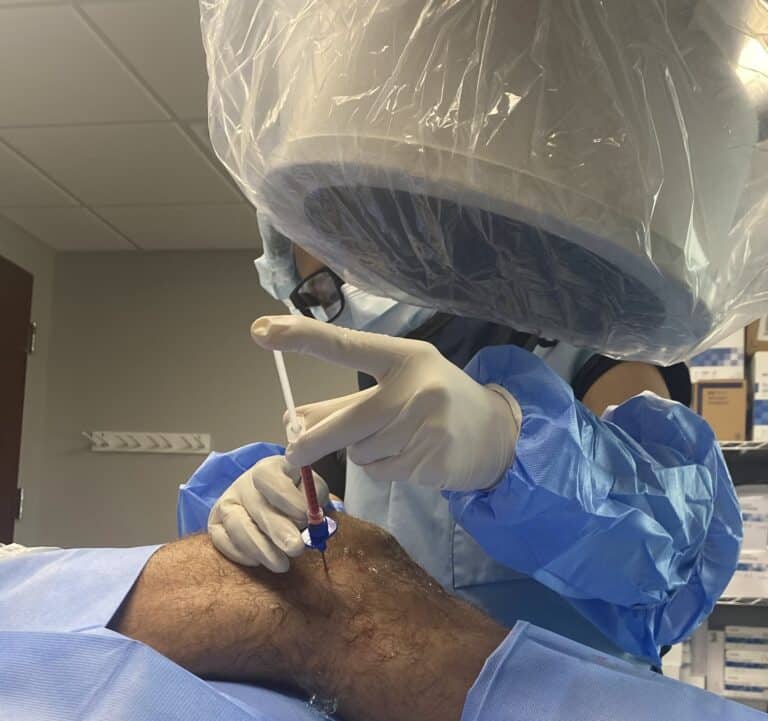Exercise and a good diet are lauded as the “fountain of youth,” helping people look and feel younger in the aging process. The question is, how are exercise and a good diet helping us actually stay younger and healthier on the cellular level?
Science of Cell Health in Exercise
Exercise can help boost your body’s naturally occurring stem cells. Mesenchymal stem cells (MSCs) reside in the body’s bone marrow and are available to differentiate into different tissue types and grow.
MSCs can take a few different paths, depending on the stimuli they are exposed to. Specifically, the MSCs in the bone marrow is often differentiated into bone or fat. Actually, there is scientific evidence that exercise has an impact on if these MSCs take the fat or bone pathway.
A study comparing rat subjects measured the bone versus fat cells from MSCs in a group that exercised versus a group that was sedentary(2,3). The rats that exercised, ran three times a week for an hour or less, and the sedentary rats did not exercise. The rats that exercised had more MSCs differentiate into bone cells, while the sedentary rats had more MSCs become fat cells.
The analysis includes that the rats who exercised had a significant impact on their blood production on the marrow cavities of the bone since they produced more new bone cells (2). The sedentary counterparts produced more fat cells, leading to compromised blood production in the marrow cells since there were fewer new bone cells formed from the MSCs.
It is likely this mechanism is related to conditions like osteoporosis or avascular necrosis in bones. If the MSCs aren’t positively influenced to make bone cells, they may preferentially produce more fat cells, affecting the overall bone health leading to weaker bones.
The summary? Aerobic exercise helps MSCs differentiate into bone rather than fat, which can be instrumental in maintaining bone health.
Enjoy Exercise While Improving your Cell Health
A new study(5) took this concept of aerobic exercise, and took it a step further, comparing the impact of steady aerobic exercise on cell health versus high-intensity exercise. This particular study measured the impact different forms of exercise had on the metabolic health of cells.
Cells have various components called organelles, all having different jobs to support the overall function of the cell. This is much like we have different organs in our bodies that perform different functions like our liver, kidneys, and heart. The organelles being measured in these studies are the mitochondria, or the powerhouses of the cells. The mitochondria are where the cell’s energy is derived and recycled, functioning much like batteries(4). It is important to keep the mitochondria functioning at full capacity so these cell batteries are “full” and avoid losing charge. If the mitochondria lose their “charge,” it can cause the cells to become sluggish and lose function.
What does this mean for bone health?
Well, the study compared mitochondrial function by exercise type, as follows(4):
- Continuous cycling for 30 minutes (moderate intensity, 50% effort)
- Five interval cycling sessions consisting of 4 minutes of cycling and 1 minute of rest (high intensity, 75% effort)
- Four sprint cycling sessions consisting of 30 seconds of cycling and 4.5 minutes of rest (maximum intensity, 100% effort).
The results showed an increase in mitochondrial function in all three exercise types. So, longer-duration cardio and high-intensity sprints have a similar, positive effect on the cells. The beautiful thing about this finding is that the type of exercise that is enjoyable to different types of people can improve cell health, allowing people to choose the exercise they enjoy.
Love Your Exercise
If you love running, for example, the study mentioned above illustrates that your cells will gain the mitochondrial benefits of exercise. If you love doing a sprint-style workout with weights, like CrossFit, you get a similar benefit for cell health. The type of fitness can vary, so that ensures you enjoy the exercise rather than slogging through something unenjoyable or avoiding exercise altogether.
On the other hand, if the pain is the reason exercise has taken a backseat in life, that’s a whole other issue. Regenerative medicine procedures can keep you in the game so that you can reap the benefits of exercise on your cells. Pain causing months or years of a sedentary lifestyle can set back your overall bone health since the studies show exercise has a positive impact on both mitochondrial function and helping MSCs to differentiate into healthy bone cells.
Make sure you stay in the game with at least 30 minutes of aerobic exercise, like walking or running, three or more times a week. This can ensure the longevity of bone health and prevent the development of osteoporosis or other conditions leading to weak or diseased bone.
Remember, rest makes you rust and motion is lotion. Find those activities that you enjoy, and let us know if pain is keeping you from those sports or activities. We love keeping our patients moving with non-operative solutions.
References:
- https://regenexx.com/blog/8-ways-improve-your-stem-cells-prior-treatment/#gref
- https://regenexx.com/blog/exercise-boosts-stem-cells-to-become-bone-not-fat/
- https://www.scientificamerican.com/podcast/episode/endurance-exercise-has-stem-cells-m-11-09-02/
- https://regenexx.com/blog/high-intensity-interval-exercise-vs-endurance-exercise-cell-health/
- https://journals.physiology.org/doi/full/10.1152/ajpregu.00096.2018










